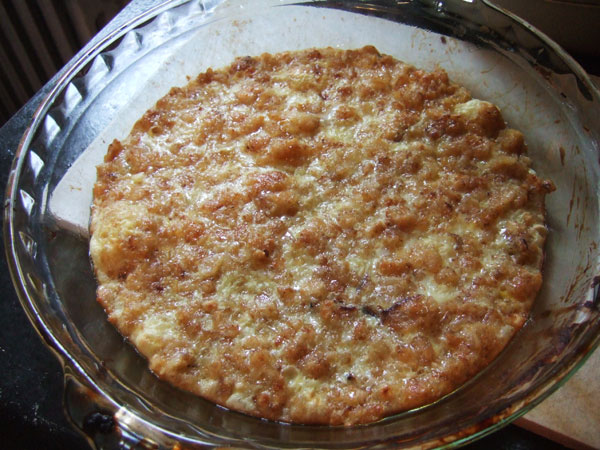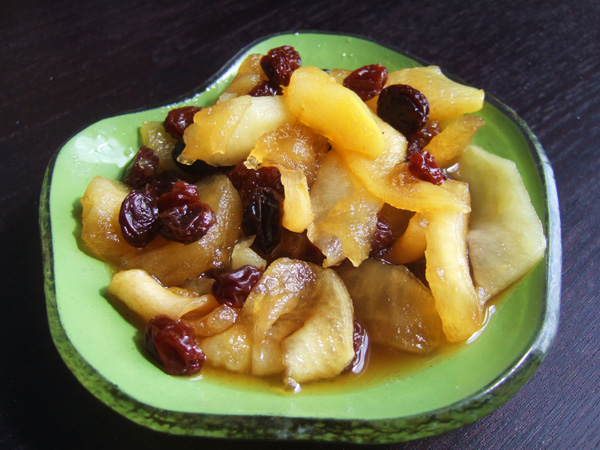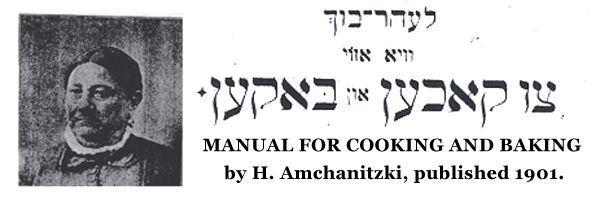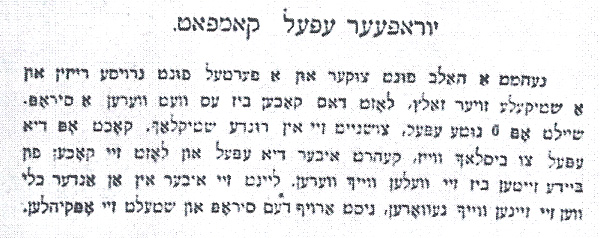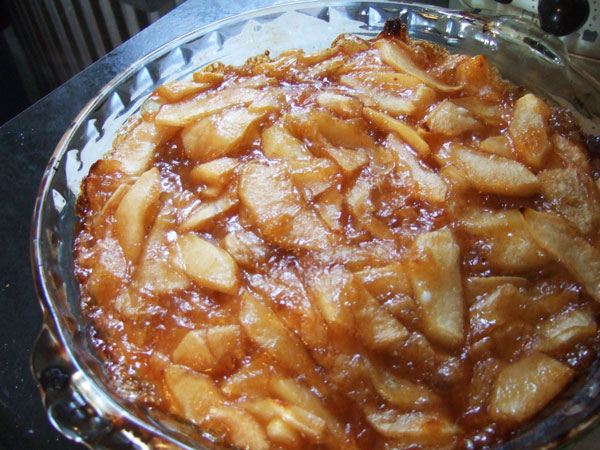 Apple pie with a matzo meal crust.
Apple pie with a matzo meal crust.
Back in September, I was asked to represent the Lower East Side Tenement Museum at Apple Day.  Apple Day pays tribute history of the Lower East Side, which in the 1700s was  part of Mr. Delancy’s farm and  included a sizable apple orchard.  My assignment was to feature apple dishes that reflected the neighborhood’s immigrant history.
I was immediately put in mind of a cookbook I’ve talked about before: Ba’á¹am’á¹e Yidishe maykholim; or, Tempting Kosher Dishes.  The book is now online thanks to the Steven Spielberg digital Yiddish library.
Ba’á¹am’á¹e Yidishe maykholim is a perfect example of Americanization and assimilation through the dinner table. Â Released by the Manischewitz company in 1944, the slender cookbook is written in both Yiddish and English and features Kosher for Passover recipes for classic American dishes like Boston Cream Pie.
Someday soon, I will cook many more recipes from the book. But on the morning of Apple Day, I decided to tackle Matzo Meal Pie Crust.
This recipe starts wierd and gets weirder. Â I put my matzos in a bowl and covered them with water until they got squishy; then, with my hands, I tried to squeeze out as much water was possible. Â The result was a pile of moosh. Â Why I had to do this, I’m not sure, because the next step is to dry the matzos back out.
I toasted the matzos in a skillet. Â The recipe requested I use “fat” which means “schmaltz” which means “chicken fat,” which sadly I didn’t have. Â So I used a tablespoon of Crisco instead. Â Crisco is also kosher and released their own bi-lingual cookbook.
I toasted the matzo crumbles until they  looked dry:
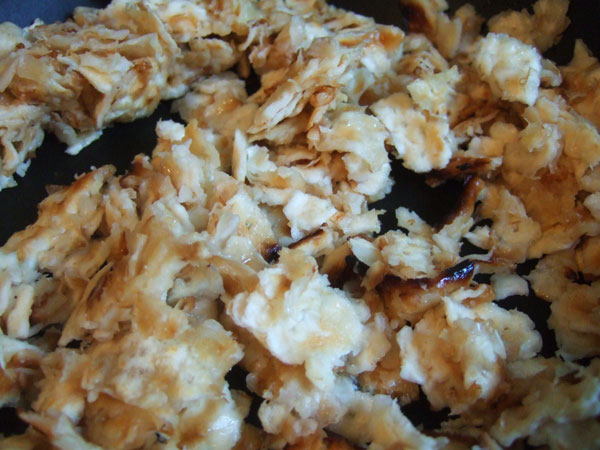 Matzos wet, then dried again, in a skillet with Crisco.
Matzos wet, then dried again, in a skillet with Crisco.
The next step in the recipe is where things took a turn for the worse. Â I mixed the toasted matzo crumbles with all the other ingredients which turned it back into moosh. Really runny moosh. Â There was no way I could “press it into a pie plate with hands” because it was just liquid. Â A mess. Â It occurred to me I was using large eggs and perhaps medium eggs were a more appropriate size. Â So I decided to scrap my messy disaster and start all over, from the top, with new matzos soaked in water.
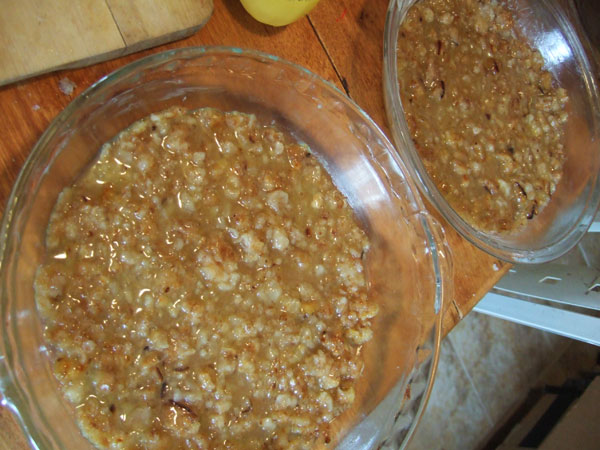 I made you puke pie.
I made you puke pie.
The second time around I used one egg instead of two and it was still a runny, goopy mess. Â Usually, when something I make looks that much like puke, I call it quits. Â But the fact of the matter was I had to be at Apple Day in about two hours. Â So I poured my goop into two pie plates and slide it in the oven to pre-bake it before the filling went in.
I put it in at 350 degrees for about 20 minutes.  In the meantime, I prepared a basic apple filling.
When I took the crust out of the oven, it looked better, but still suspect. Â It had, a least, formed into something crust-like.
I poured in the apple filling and put it back in the oven for another 15 minutes. Â This time, when it came out, it looked rather glamorous. Â I wrapped it up and carted it off to Apple Day.
In the end, this crust was a real surprise. Â At the event, I cut the pie and scooped out a serving to taste test. Â The crust was almost meringue-like: sweet and crunchy, but a little chewy, too. Â Like apple pie over macaroon cookies. Â Really, really good.
To be honest, I’d make this crust again, although I’d try to figure out if I could cut out some of the mush to dry to mush to dry steps. Â It was a real shocker that something that looked so much like a throw-up could end up tasting so delicious.

